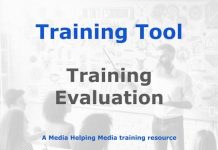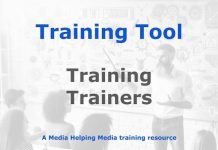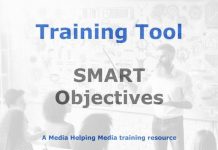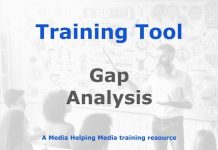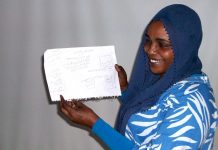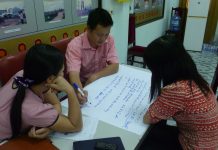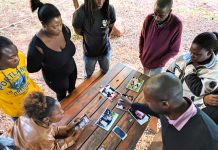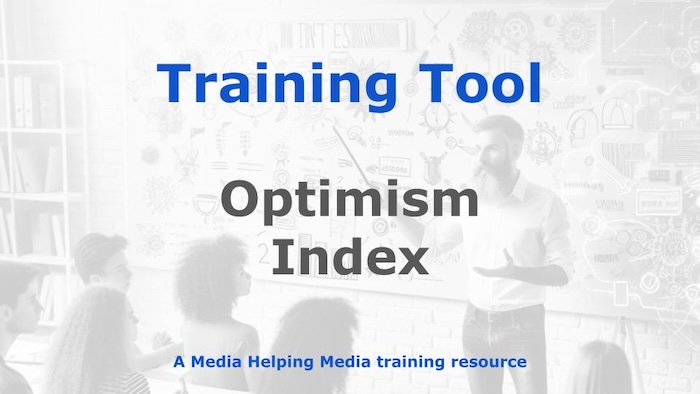 The ‘Optimism Index’ is a tool designed for trainers of group journalism sessions to gauge and ultimately improve the participants’ hope for the future by first identifying their main concerns.
The ‘Optimism Index’ is a tool designed for trainers of group journalism sessions to gauge and ultimately improve the participants’ hope for the future by first identifying their main concerns.
A media development project exists to help tackle problems. We might be trying to raise general standards, address particular issues of concern, teach the techniques of investigative journalism or combat misinformation.
Frequently, the problems have their origins not so much in the news organisation in question, but in the wider political or social context. These can seem intractable.
It’s common to find news staff struggling in difficult conditions. They might be ground down and depressed by their situation. They doubt things will ever get better.
Journalists can easily fall prey to cynicism and defeatism, purely because of the difficult things they have to deal with, day in and day out.
So whatever we are trying to achieve in teaching new skills and standards, we ALSO want to complete our work by leaving the news staff in a more positive frame of mind. We want to impart energy and optimism about the future.
For this reason, we devised a system to identify the most important problems in the journalists’ minds, find out what level of hope they have for the future and seek to improve it in the course of our work.
We call it the Media Helping Media Optimism Index. It is a simple enough idea and you can adapt its implementation to suit your purposes but this is one way in which it works:
- On the first day, after all the introductions have been done, make sure you have a list of names of the participants.
- Now allocate the first hour to the Optimism Index.
- Start by asking the group to tell you the problems they face.
- Write the answers down on a whiteboard or flip chart for everybody to see.
- As each problem is identified, ask for more detail about it.
- Encourage everyone present to chip in and give examples.
- Make notes of these – they will be useful later in the course.
Your objective here is to get as much participation as possible and as long a list of problems as possible – but also to get some sense of the relative importance of these problems and who is most bothered by them.
Keep your own mood light but do not at this stage start asking for suggestions about how to tackle the problems. That comes later.
You are encouraging them to open up and vent, but be careful the discussion does not become personal.
Towards the end of the session you should have a long list in no particular order.
Ask everybody to list the top three problems, in order.
Now you are going to ask each individual to give a value to their level of hope for the future.
There can be a high level of flexibility in how you phrase the question. That will depend how you judge their situation and their mood.
You might put it like this: “I am going ask you now to tell me how confident you feel that we can make progress in addressing these problems and improving your lives as working journalists. Please give marks out of 10, 10 being very confident indeed and 1 being not confident at all.”
Repeat the question several times until you’re sure that everybody understands it.
Stress that this information is for your personal edification only and will not be passed on to their editors or anyone else. It is information in confidence.
Go round the room and take each person’s score. Write it down on your list of names – but again stress that you will not be showing it to anyone else.
While explaining out loud what you are doing, add up all the scores and divide the total by the number of participants.
Finally, you announce something like this: “On a scale of one to ten, our group’s score in the Index of Optimism is 4.5”.
You can leave it at that and move on but the discussion in that first hour will inform the rest of your work: you now know what people are worried about.
As you work through your planned course, whatever it is about, keep relating it to the problems and examples you collected in that first hour. It will ensure the content is relevant to the participants.
Your aim is to come back to the index and repeat the voting exercise just before the end of the course – and before you ask your students to do a formal appraisal.
If you have worked well, the Index average will be higher than at the first count and you will have some data, albeit not exactly scientific, that you have succeeded in raising confidence, morale and, of course, optimism.
But the main objective is not to increase your own sense of accomplishment – it is genuinely to make the journalists feel better about themselves and their future.

